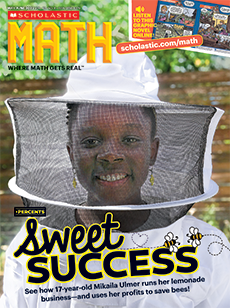I’m a macrophage, which is a type of infection-fighting white blood cell!
Most of the time, the common cold is a cause for concern. But for the toy maker GIANTmicrobes, the common cold is a bestseller! Since 2002, the company has made plush toys shaped like microbes, which are organisms too small to see with the human eye. Some of their most popular plushes are the viruses and bacteria that cause the flu, pneumonia, or Ebola—but supersized. The designers then add beaded eyes and colorful details.
The first GIANTmicrobe was of the common cold virus. Founder Drew Oliver wanted his children to learn why it was important to wash their hands, so he made a stuffed animal shaped like the common cold to teach them about germs. From there, “it evolved into making science fun and accessible,” says Andrew Klein, the company’s current president.
Usually you want to avoid the common cold. But that’s not true at the toy maker GIANTmicrobes. For them, the common cold is a bestseller! Since 2002, the company has made plush toys shaped like microbes. These are organisms too small to see with the human eye. GIANTmicrobes makes supersized versions. Some of their most popular toys are the microbes that cause the flu, pneumonia, and Ebola.
The first GIANTmicrobe was the virus that causes the common cold. The idea came from company founder Drew Oliver. He wanted his kids to learn why it was important to wash their hands. So he made a stuffed animal shaped like the cold virus to teach them about germs. From there, “it evolved into making science fun and accessible,” says Andrew Klein. He’s the company’s current president.
